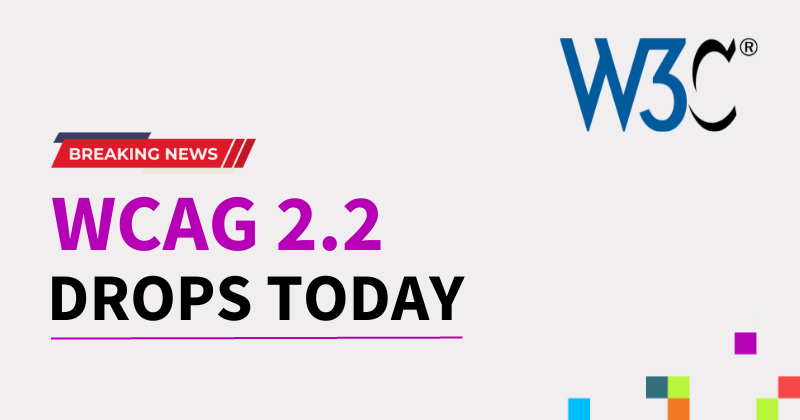
We are delighted to announce the latest version of the Web Content Accessibility Guidelines (WCAG) 2.2, produced by the World Wide Web Consortium (W3C), has been dropped!
This release marks a remarkable leap forward in enhancing the accessibility of digital content and services.
Curious about what this entails and the modifications it brings?
Here is a summary of the new Level A and AA criteria in WCAG 2.2:
- 4.11 Focus Not Obscured (Minimum) (AA) This requires author-created content does not entirely hide page components with focus.
- 5.7 Dragging Movements (AA) This requires any functionality the uses a dragging movement to have an alternative that does not require dragging and can be achieved with a single pointer.
- 5.8 Target Size (Minimum) (AA) Think requires the pointer target to be at least 24×24 CSS pixels, except where the target is sufficiently far from other targets, an equivalent control is provided on the page, the target is in a sentence of is constrained by the line-height of non-target text, the target size is under the control of the user agent, or the otherwise non-conforming presentation of the target is essential or legally required.
- 2.6 Consistent Help (A) This requires help mechanisms to be in the same order relative to other pages content for each page in a set of webpages.
- 3.7 Redundant Entry (A) This requires information that has already been provided in a process to be automatically populated or available for selection, except where not providing it again is essential, required for security or the data is no longer valid.
- 3.8 Accessible Authentication (Minimum) (AA) This requires authentication processes to not require cognitive function tests except where there is a mechanism to help complete the test, the test is recognising objects or the test is to recognise non-text content that the user provided to the website.
There are also three AAA criteria:
- Focus Not Obscured (Enhanced)
- Focus Appearance
- Accessible Authentication (Enhanced)
The 2.0 and 2.1 success criteria are exactly the same in 2.2, with one exception: 4.1.1 Parsing is obsolete and removed from WCAG 2.2.
To provide consistency between the new standard and previous versions of WCAG 2.0 and 2.1, W3C has recommended in most scenarios to automatically Parse 4.1.1 in the older standards.
This prevents the need to remove the SC from those standards, but ultimately ensures consistency in it not being assessed.
Stay tuned for more updates and insights on how WCAG 2.2 is transforming the digital accessibility landscape.
For detailed information on these guidelines and their implementation, please refer to the official WCAG 2.2 documentation.
